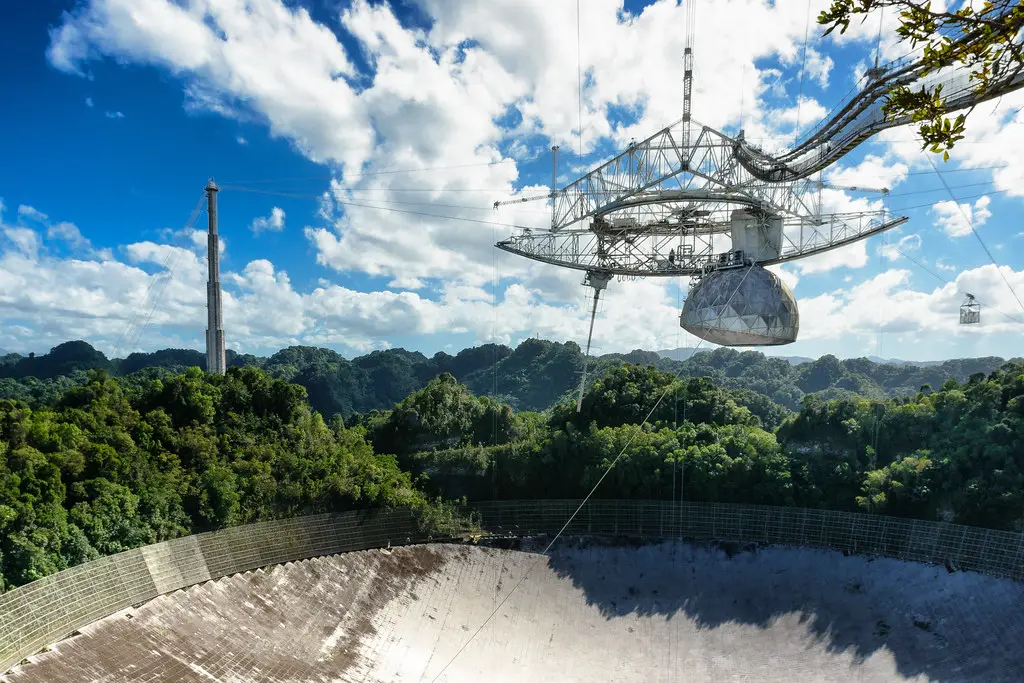The largest single-aperture telescope in the world was formerly housed at the Arecibo Observatory in Puerto Rico. With a 305-meter dish, it was a premier facility for atmospheric science, radar astronomy, and radio astronomy. The Arecibo Telescope has greatly advanced our understanding of the universe and played a key role in a number of important discoveries over its existence.
Discovery of the First Extrasolar Planets
At the famous Arecibo Observatory in Puerto Rico, one of the most important discoveries ever made took place in 1992. This year, a group of committed astronomers discovered the first extrasolar planets, marking a significant advancement in the field. These remarkable planets weren’t just any celestial bodies; they were discovered orbiting the neutron star pulsar B1257+12, which is almost 1,000 light-years from Earth.
The discovery of these extrasolar planets pushed the limits of our knowledge of the cosmos and represented a major breakthrough in the science of astronomy. This groundbreaking finding offered a new perspective on humanity’s role in the wide universe and opened up a new avenue in the hunt for extraterrestrial life. The discoveries excited and piqued the interest of scientists all over the world, which led to more research and study into the cosmos’ mysteries.
Pioneering Planetary Mapping
Planetary mapping relied heavily on the Arecibo Telescope, a well-known astronomical observatory in Puerto Rico that was also a potent radar transmitter and receiver. With its enormous 1,000-foot dish tucked inside a sinkhole in the landscape, it was the biggest single-dish radio telescope ever built. Making use of its amazing powers, the telescope produced intricate maps that have greatly improved our knowledge of the makeup and structure of a wide range of celestial bodies, from planets to asteroids. The Arecibo Telescope is a key component of astronomical study because of the abundance of data it has provided, which has enhanced our understanding of the vastness of the solar system and beyond.
Other Notable Contributions
In addition to these important findings, the Arecibo Telescope produced a great deal of other noteworthy scientific advances. For example, it was essential in improving our comprehension of the complex dynamics of Mercury as well as the value of the planet’s rotation period. Through careful rotational observations, the telescope disproved the 88-day rotation time previously believed to exist for Mercury, revealing that it actually rotates for 59 days. These accurate observations not only dispelled a long-held myth but also demonstrated how vital the telescope is to expanding our understanding of the solar system’s celestial bodies.
Furthermore, the Puerto Rican Arecibo Observatory was essential in expanding our understanding of pulsars, which are fast spinning neutron stars that emit electromagnetic radiation beams while in rotation. Astronomers used the observatory to locate even the most elusive pulsars because of its exceptional sensitivity and wide range of capabilities, which allowed for in-depth research into the peculiar characteristics and behavior patterns of these objects. This increased knowledge of pulsars has not only helped us better comprehend these mysterious things, but it has also given us important new perspectives on the intricate processes that occur inside the domains of these celestial bodies.
Astronomers throughout the world continue to draw inspiration from the legacy of the Arecibo Observatory in Puerto Rico, even after it collapsed in 2020 as a result of structural problems. Although the terrible tragedy forced Arecibo’s remaining equipment to cease astronomical observations, efforts are in place to convert the facility into an educational hub to foster scientific curiosity. Even while the Arecibo observatory’s period of ground-breaking astronomical discoveries may be gone, its dedication to promoting education and inspiring a passion for space exploration will live on, having a lasting influence on astronomers and science enthusiasts in the years to come.
With its recognizable radio telescope, the Arecibo Observatory was instrumental in several scientific discoveries, such as the detection of the first binary pulsar and the finding of the first exoplanet. Its enormous contributions to space exploration and radio astronomy have shaped our understanding of the cosmos. The spirit of invention and discovery that characterized Arecibo’s legacy endures to inspire astronomers and scientists around the globe, despite the difficulties it encountered.
But in the midst of the debate about closing the Arecibo Telescope, several ideas have surfaced that call for building a cutting-edge observatory in its stead. As we look to the future, we consider the incredible legacy of the Arecibo Telescope and the significant contribution it has made to advancing our understanding of the universe.
Sources
![]()
